How to Use Tie Downs to Secure Your Floating Dock
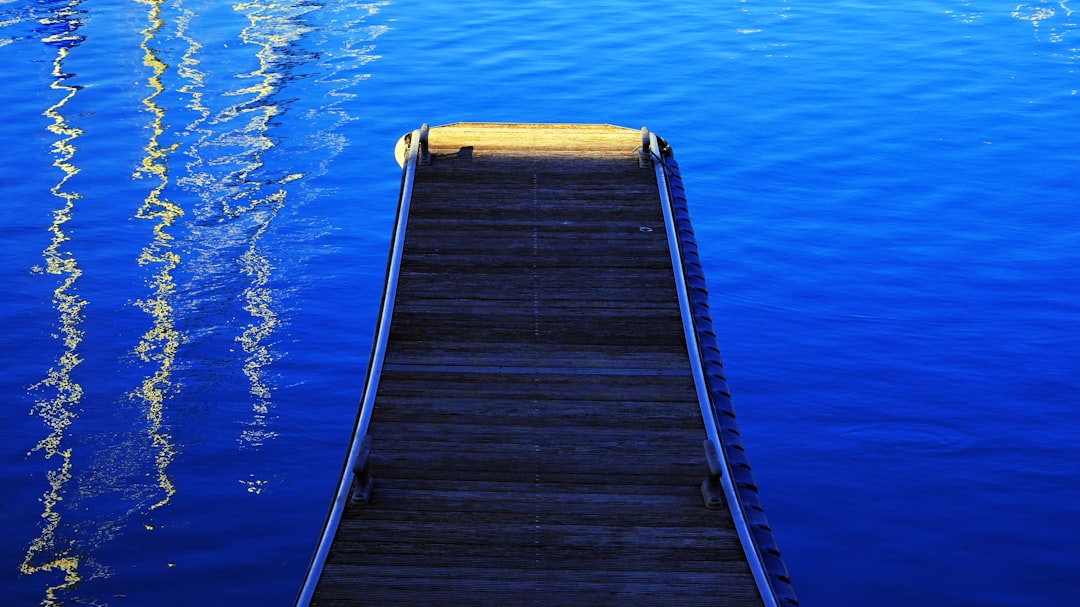
Why Proper Floating Dock Tie Downs Are Critical for Your Investment
Floating dock tie downs are the anchoring systems that keep your dock securely in place against wind, waves, and currents.
Essential Tie Down Components:
- Concrete anchors (minimum 600 lbs at corners)
- Galvanized chains (3/8\" for most applications)
- Shackles and quick links for connections
- Turnbuckles for seasonal adjustments
Common Anchoring Methods:
- Stiff-arm systems - rigid beams for calm waters
- Cable anchoring - flexible deadweight systems
- Pile anchoring - permanent posts for rough conditions
- Pole and sleeve - adjustable for water level changes
Your floating dock is a significant investment. Without proper tie downs, a storm can turn it into expensive driftwood or a hazard to neighboring property. Research shows that properly anchored floating docks can protect boats during hurricanes better than fixed docks. However, poor anchoring creates risks like dock drift, boat damage, and liability issues.
As one Long Island homeowner learned: \"My neighbor to the left found his floating dock in his front yard and the neighbor to the right lost his old floating dock after it slipped over the wood pilings and broke in half.\"
This guide covers site assessment, material selection, installation, and maintenance for securing your floating dock, custom to Long Island's unique waterways.

Floating dock tie downs terms at a glance:
First, Assess Your Waterfront: Planning Your Anchoring Strategy
Skipping a site assessment before anchoring your floating dock is a common mistake that leads to failure. Most dock issues stem not from poor installation, but from a failure to understand the waterfront environment.
A successful floating dock tie downs system starts with a thorough site assessment. We measure water depth at high and low tides, including spring tides, to ensure your anchoring system functions correctly at all water levels. The bottom conditions dictate which anchors will hold; soft mud, firm sand, or hard rock each require a different anchoring approach.
Current strength, tidal range, fetch distance (the distance wind travels over water), and wind exposure are critical forces affecting dock stability. Conditions in a protected Long Island cove differ vastly from an open bay, directly impacting wave action. Finally, consider local regulations and the permitting process. In Nassau and Suffolk County, approvals from your municipality and the NYSDEC are often required. Securing permits upfront prevents future fines and insurance complications.
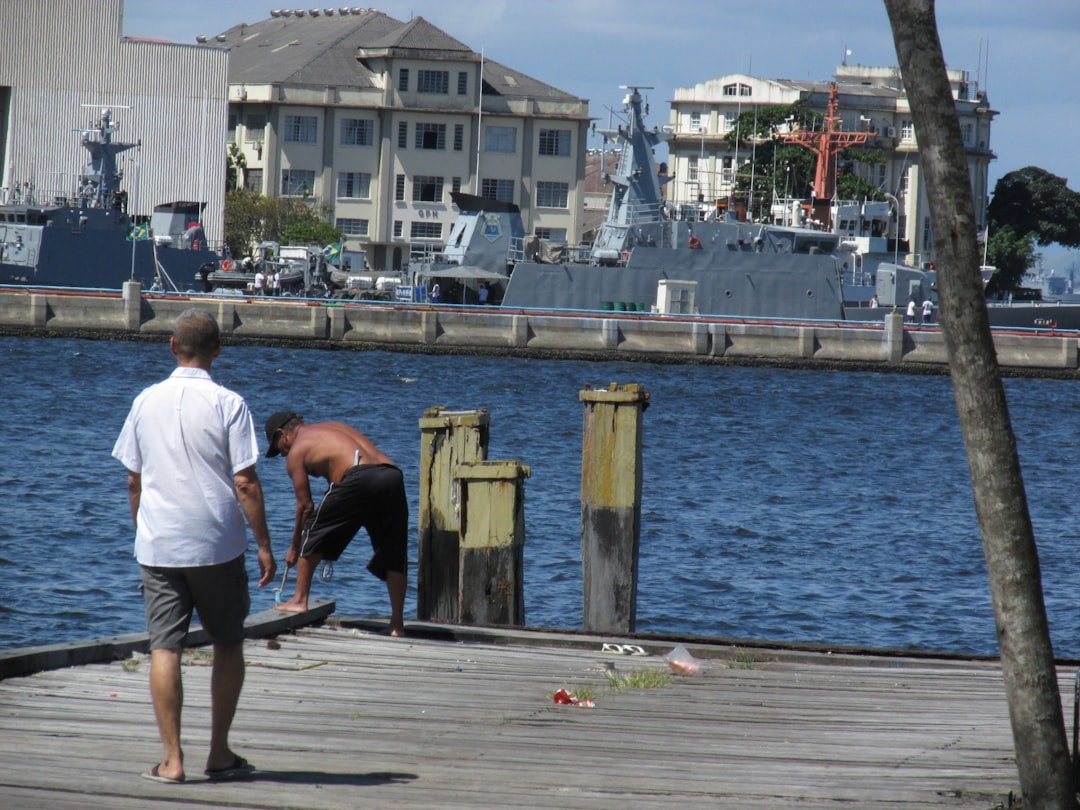
Understanding Your Site's Unique Challenges
No two Long Island waterfronts are identical. Your water body type, whether a sheltered cove or an open bay, dictates your anchoring strategy. Boat traffic generates destructive wakes, which can damage a dock more than natural waves. Seasonal water level changes can also be dramatic, potentially leaving a dock stranded or putting extreme tension on anchor chains. We also identify underwater obstacles like old pilings or debris that could interfere with anchor placement. Our experience with Long Island's specific conditions—from winter ice to shifting currents—allows us to design anchoring systems that last.
Why Permitting is a Crucial First Step
Regulatory compliance is essential for protecting you from fines, insurance claim denials, and legal issues. Many insurance policies now require proof of permits to cover storm damage. Furthermore, permits ensure environmental protection rules are followed, preserving local marine ecosystems. Navigating local town and village codes in Nassau and Suffolk Counties can be complex. We recommend applying for permits in the fall or winter to ensure you're ready for a spring installation. The process helps identify potential issues before construction begins. For more technical guidance, see our guide on How to Anchor a Floating Dock to Shore.
Planning your floating dock project? Our comprehensive resource on Floating Dock Construction Plans covers everything you need to know about turning your waterfront vision into reality.
Choosing the Right Floating Dock Tie Downs and Anchoring System
After assessing your site, it's time to select the right floating dock tie downs and anchoring system. The choice depends on finding a balance between reliability, durability, and cost for your specific conditions. Quality, marine-grade materials are the foundation of a successful system. Corrosion resistance is critical, especially in saltwater. While galvanized steel works for freshwater, we recommend hot-dipped galvanized or 316-grade stainless steel for saltwater environments like the bays near Southampton or Huntington. The upfront cost is higher, but it prevents premature failure and saves money long-term.
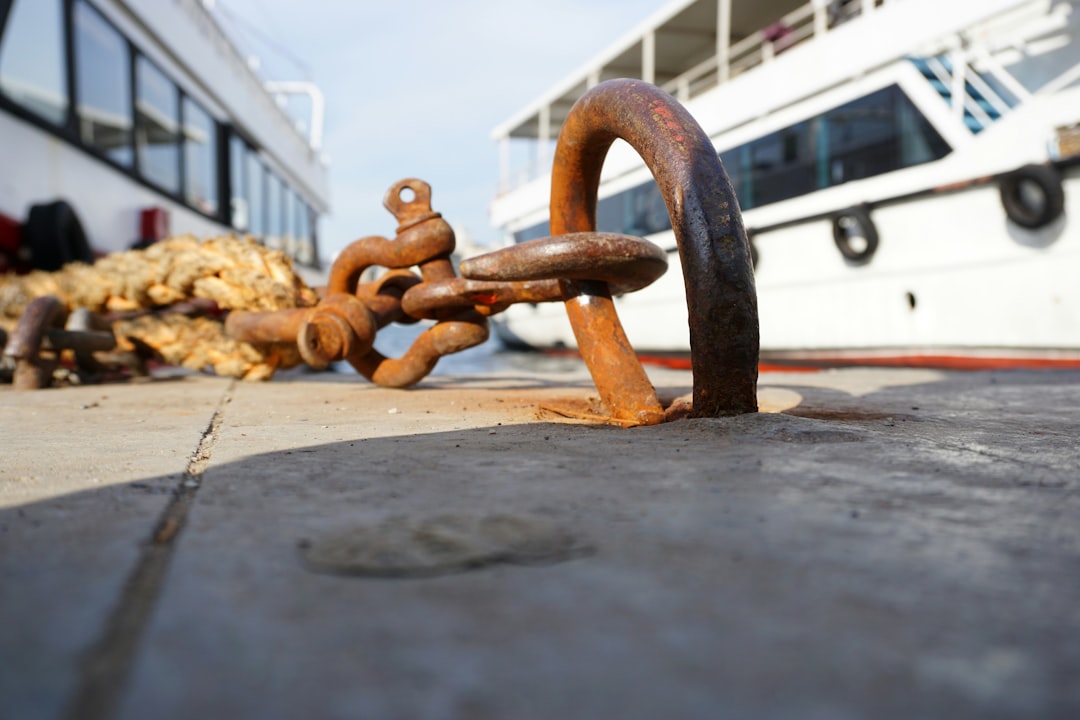
Common Anchoring Methods
There's no universal solution for anchoring a floating dock. Each waterfront presents unique challenges that require custom approaches. Sometimes we even combine methods to achieve optimal stability for your specific conditions.
Anchoring MethodDescriptionIdeal Water ConditionsCost (Relative)MaintenanceStiff-ArmRigid beams (2-4 inches in diameter, aluminum, steel, or composite) hinged to the shore and the dock, allowing vertical movement but preventing lateral drift.Minimal water fluctuation, calm waters, narrow waterways, close to shore.ModerateLowCable (Deadweight)Heavy concrete blocks or granite anchors on the seabed, connected to the dock with galvanized chains (3/8\" to 1/2\" diameter) or cables. Often in a crisscross pattern.Moderate to significant water fluctuation, various bottom types, good for most residential uses.ModerateLow-ModeratePileVertical piles (wood, steel, or composite) driven into the seabed, with the dock attached via pile holders or sleeves that slide up and down.Rougher waters, strong currents, heavy boat traffic, permanent installations, areas with ice formation.HighModerate (requires pile driving)Pole & SleeveSimilar to pile, but typically uses lighter vertical poles (aluminum, steel, or composite) that pass through sleeves on the dock. Poles are secured to the bottom or shore.Significant water level changes, softer bottoms, often for smaller docks.ModerateLow-Moderate
Stiff-arm anchoring is ideal for protected areas with minimal water fluctuation, providing lateral stability without obstructing waterways.
Cable anchoring with deadweight systems offers a balance of reliability and flexibility, suitable for moderate tidal changes. Using concrete anchors at opposing angles creates a stable web of support.
Pile anchoring provides maximum security for rough waters, strong currents, or permanent commercial installations.
Pole and sleeve systems are excellent for areas with regular water level fluctuations, such as Long Island's tidal creeks, allowing vertical movement while preventing lateral drift.
For more details on these systems, check out our guide on Floating Dock Anchoring Systems and Dock Anchors for a Floating Dock.
Essential Materials for Your Tie-Down System
The strength of your floating dock tie downs depends on the quality of the materials. We select components built to last in the marine environment.
- Concrete blocks are standard for residential use. A 150-pound block provides about 75 pounds of force underwater due to buoyancy.
- Granite anchors (up to 2,500 lbs) offer maximum holding power for exposed locations.
- Mushroom anchors are best for soft, muddy bottoms where they create suction.
- Helical anchors are screwed into the seabed, providing excellent hold, especially in tight spaces or sensitive habitats.
For chains, we use galvanized steel (typically 3/8\" for residential docks), upgrading to hot-dipped galvanized or stainless steel in saltwater. Properly sized shackles, eyebolts, and quick links are critical for all connections. Turnbuckles are essential for seasonal adjustments to chain tension.
You can find more detailed information on anchor selection in our guide: Floating Dock Shore Anchor.
How to Calculate Anchor Weight and Chain Length
Correct anchor weight and chain length are crucial. A good starting point is a minimum of 600 pounds of anchor weight at the furthest corners for calm conditions, and 450 pounds per side for docks closer to shore. However, you must increase weight for factors like:
- Exposed locations (fetch over half a mile)
- Strong winds (over 15 mph)
- Frequent boat traffic and wakes
- Larger moored boats (over 20 feet)
For each of these factors, add an extra 100-200 pounds per corner. It's better to have too much anchor weight than too little. For chain length, use a scope ratio of 1.5 to 2 times the maximum water depth. For example, 8 feet of water requires 12-16 feet of chain. In tidal areas, add more length to create slack. This slack is vital to accommodate water level changes without stressing the system.
For more detailed calculations specific to your situation, see our guide: How Do You Anchor a Floating Dock.
Step-by-Step Installation Guide: Securing Your Dock
After planning and material selection, it's time to install your floating dock tie downs. Safety is the first priority: always use life vests, work gloves, and have the right tools ready. You'll need a boat, planks for lowering anchors, wrenches, and bolt cutters. Proper installation is an art learned through experience. Rushing the process can lead to a dock shifting in the first storm, causing significant damage.
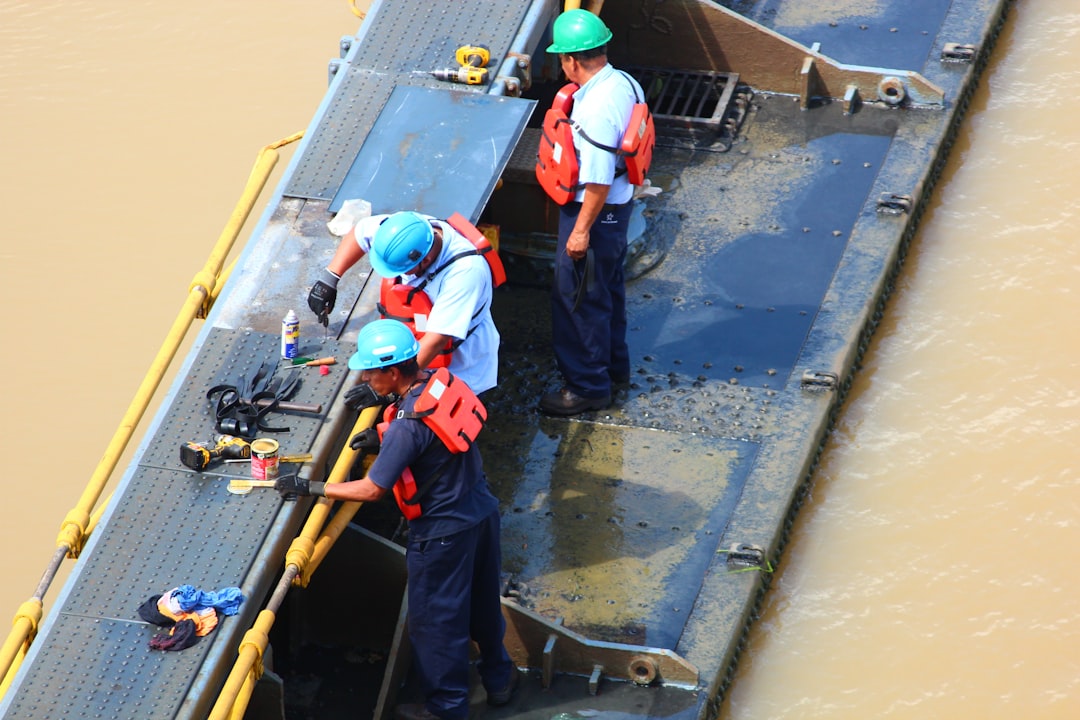
Laying Out Your Floating Dock Tie Downs for Maximum Stability
The key to a stable dock is anchor positioning. We recommend the crisscross or X-pattern layout, which creates a web of support that handles forces from all directions and prevents swaying. Docks with this pattern withstand storms far better than those with simple straight-run anchoring. For longer docks, space anchor points every 24 to 30 feet to distribute the load evenly. Before deployment, we precisely mark each anchor position using GPS and visual landmarks to ensure maximum holding power.
Deploying Anchors and Attaching Chains
Anchor deployment requires precision. We prepare anchors and chains on shore, checking all hardware before loading them onto our workboat. Heavy concrete blocks are gently lowered to the seabed using planks, while mushroom anchors are dragged slightly to help them dig into the mud. Once anchors are set, we connect the chains to the dock with heavy-duty shackles, forming the crisscross pattern. Adjusting the chain is critical: we leave 1 to 2 feet of slack (or more for large tidal ranges) to allow the dock to rise and fall with water levels without creating stress. Finally, we stress-test the system to confirm minimal lateral movement and proper vertical flexibility. Our team also installs the shore connection, such as a gangway or stiff arms, to complete the system.
For more detailed information on the installation process, check out: How to Anchor a Floating Dock and Attach Floating Dock to Shore.
You can also learn more about specific anchoring techniques here: Floating Dock Anchoring.
Maintenance, Troubleshooting, and When to Call a Pro
Your floating dock tie downs are a vital investment requiring proper care. Regular maintenance prevents small issues from becoming expensive disasters and can extend the life of your anchoring system by decades.
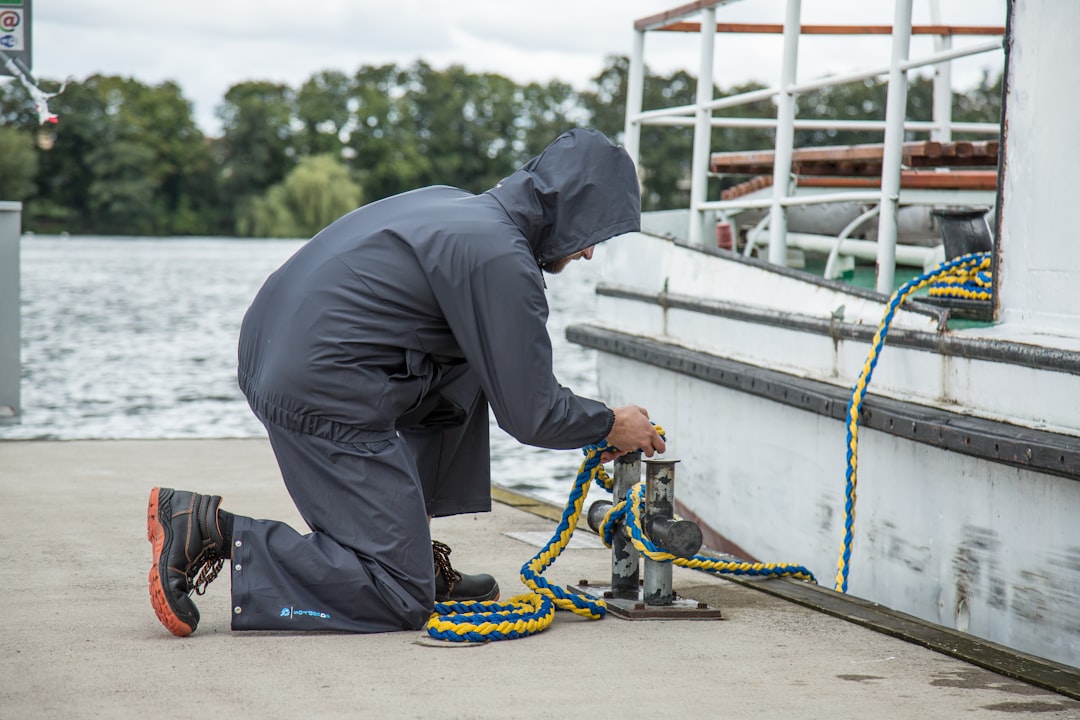
Routine Inspection and Maintenance Checklist
Regular checks are key to long-lasting floating dock tie downs. Follow this simple maintenance schedule:
- Monthly Visual Checks: During boating season, look for rusty chains, loose connections, or other signs of trouble.
- Spring and Fall Inspections: These are your most important checks. In spring, inspect chains for wear, corrosion, and kinks. Tighten all hardware. In fall, prepare the system for winter.
- Adjust for Water Levels: Use turnbuckles to maintain proper chain tension as water levels change to avoid dangerous strain on the system.
- Winterization: This depends on local ice conditions. In severe ice areas, removing the dock is safest. In milder areas, add about 25% more slack to chains and remove accessories. Consider ice deflectors or bubbler systems in areas with moving ice to prevent damage.
Common Mistakes to Avoid with Floating Dock Tie Downs
With proper planning, you can avoid these common and costly mistakes:
- Underestimating anchor weight: Skimping on weight is a primary cause of dock failure. A 12' x 24' dock may need over 3,300 pounds of total holding force.
- Ignoring bottom conditions: The anchor type must match the seabed (e.g., mushroom for mud, not rock).
- Using inadequate materials: Non-marine-grade hardware corrodes quickly in salt air, leading to failure.
- Forgetting chain slack: Chains that are too tight can pull a dock underwater during high tides or create immense stress.
- Mixing metals: This causes galvanic corrosion, which accelerates deterioration (e.g., stainless steel with galvanized chain).
- Neglecting maintenance: Regular checks prevent small issues from becoming major repairs.
- Skipping permits: This can lead to fines, removal orders, and denied insurance claims.
When to Seek Professional Help
While some maintenance is DIY-friendly, certain situations require professional expertise to save time, money, and avoid safety hazards. Call a pro for:
- Complex site conditions: Strong currents, large tidal ranges, difficult bottom conditions (like bedrock), or heavy boat traffic require specialized knowledge.
- Large or commercial docks: These require engineered solutions beyond typical residential setups.
- Significant storm damage: An expert can assess structural integrity and ensure proper repairs.
- Navigating permits: Our team understands Nassau and Suffolk County regulations and can manage the process for you.
- Hurricane-prone areas: These locations demand professional design and installation, even in protected hurricane holes.
If your dock doesn't return to its proper position after being moved by waves or wakes, or if you have any doubts about your system, it's time to call for a professional assessment.
For more on securing your floating dock to shore, visit: Secure Floating Dock to Shore.
Learn about our floating dock construction services: Floating Dock Construction.
Conclusion
A securely anchored floating dock provides invaluable peace of mind. By following the key principles of effective floating dock tie downs—thorough site assessment, quality marine-grade materials, precise installation, and regular maintenance—you can protect your waterfront investment for years. A properly secured dock is your gateway to waterfront living, free from worry about safety or storm damage.
At Pearce Marine Construction, a woman-owned company with generational expertise, we understand Long Island's unique waterways. We serve both the North and South Shores, bringing technical skill and genuine care to every marine construction project. We don't offer one-size-fits-all solutions; instead, we design custom anchoring systems custom to your specific site, dock, and needs.
Storms are a reality on Long Island, but with proper floating dock tie downs, your dock can be a refuge, not a liability. Our systems are designed to withstand nor'easters and hurricanes. Whether you're planning a new installation or upgrading an existing system, our team is ready to help. We build time- and hurricane-tested docks to ensure your connection to the water is secure and dependable.
To learn more about our marine construction services or to schedule a consultation, visit our Boat Docks and Floating Docks Services page. Let's build a dock system that provides decades of worry-free enjoyment.
Bring Your Vision to Life
Whether you're planning a custom dock, seawall, or boat lift, our experienced team is ready to deliver high-quality marine construction tailored to your needs. Pearce Marine Construction brings craftsmanship, precision, and a deep understanding of Florida’s waterways to every project. Let us help you create a durable, beautiful solution that stands the test of time. Get in touch now for a personalized estimate!


%20(2)%20(1)%20(1).avif)

